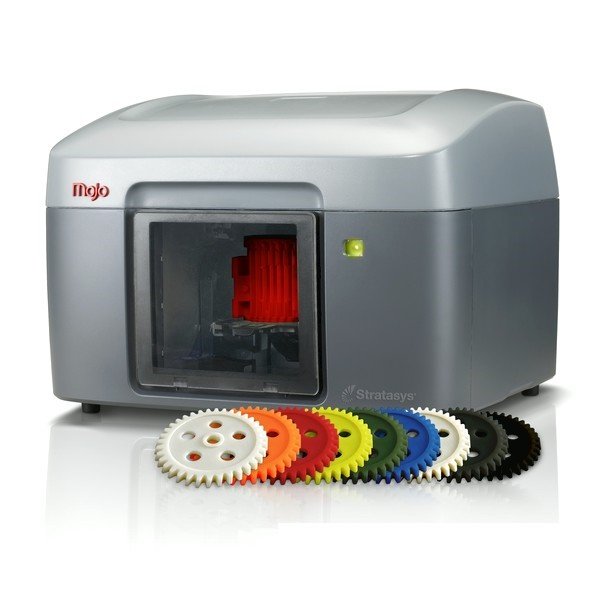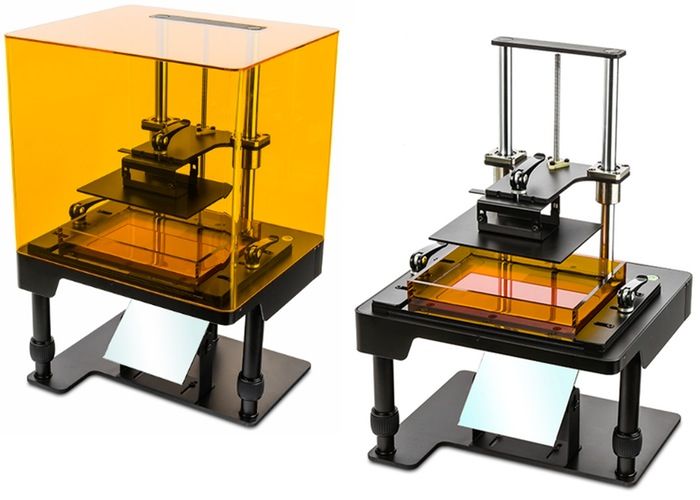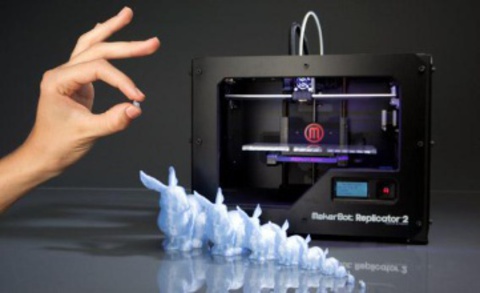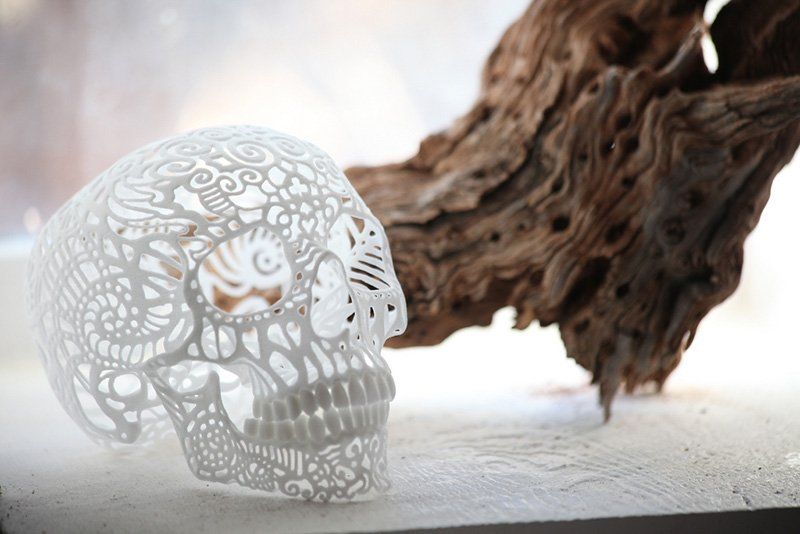Stratasys f370 3d printer price
Stratasys F370 3D Printer - FDM 3D Printing
Precision 3D printing. Easy as F123.
The Stratasys F370 represents the best in the F123 Series. More reliable, more affordable, more productive rapid prototyping and manufacturing than ever before. Along with unmatched versatility, you will have access to a wide range of materials including carbon fibre, ABS and elastomer. Achieve complex geometries and interlocking components with our unique soluble support material.
More speed. More productivity.
The F370 3D printer give designers, engineers and educators access to affordable, industrial-grade 3D printing. Work faster through concept iterations and component verification. Make jigs, fixtures and manufacturing tools faster, with strong, stiff materials. Increase productivity and reach your goals sooner with repeatable results.
Smoother workflow. Quieter workspace.
F370 3D printer is designed for supreme ease of use and a more streamlined workflow, working seamlessly with the design-to-print GrabCAD Print software. They provide the reliability and simplicity needed in a 3D printing platform to refine designs. This can be done within the work space, thanks to clean, quiet, safety-certified printers.
See the specs.
| Build Size | 355 x 254 x 355 mm (14 x 10 x 14 in.) |
| Size and Weight | 1626 x 864 x 711 mm (64 x 34 x 28 in.) 227 kg (500 lbs) with consumables |
| Layer Thickness: PLA | 0.254mm (0.010 in) |
| Layer Thickness: ABS | 0.330mm (0.013 in) 0.254mm (0.010 in) 0.178mm (0.007 in) 0.127 (0.005 in) |
| Layer Thickness: ASA | 0.330mm (0.013 in) 0.254mm (0.010 in) 0.178mm (0.007 in) 0.127 (0.005 in) |
| Layer Thickness: PC-ABS | 0.330mm (0.013 in) 0.254mm (0.010 in) 0.178mm (0.007 in) 0.127 (0.005 in) |
| Layer Thickness: FDM TPU 92A | 0. 254mm (0.010 in) 254mm (0.010 in) |
More choices. More possibilities.
Work with a wide range of materials including carbon fiber ABS and elastomer. Achieve complex geometries and interlocking components with our unique soluble support material. However intricate the part, the soluble support dissolves to leave a pristine finish, requiring no hands-on removal.
| PLA (Polylactic Acid) | Made from renewable sources and suitable for quick, economical design concepts in 11 colour options. Good tensile strength and high stiffness ratio. |
| ABS-M30 | Ideal for concept models and moderate requirement parts including functional prototypes, jigs, fixtures, manufacturing tools and production parts. |
| ASA (Acrylonitrile Styrene Acrylate) | Provides strength, colour choice and UV resistance for outdoor-use production parts. |
| PC-ABS | PC-ABS is a high-impact engineering thermoplastic ideal for functional prototyping, tooling and low-volume manufacturing.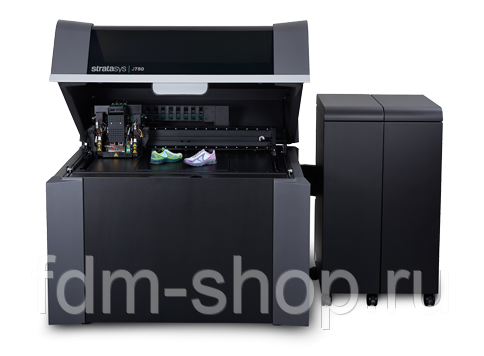 |
| TPU 92A | A flexible, durable and resilient elastomer with a Shore A value of 92, ideal for applications such as hoses, tubes, air ducts and vibration dampeners. Eliminates expensive and time-consuming moulding or casting methods. |
| ABS-ESD7 | Static dissipative properties for applications where a static charge could damage products, impair performance or cause an explosion. Ideal for electronic parts with circuit boards, as well as the transportation and industrial equipment industries. |
| Diran 410MF07 | A durable, nylon-based thermoplastic with exceptional durability, toughness and resistance to hydrocarbon-based chemicals. Smooth, low-friction surface quality for non-marring factory floor tooling. |
Stratasys F123 3D printer series technical specs and pricing
0Shares
Yesterday 3D Printing Industry took a first look at the new F123 series of 3D printers from Stratasys. Here we present a more detailed review featuring some of the technical details in these new machines and a first for the 3D printing company.
Here we present a more detailed review featuring some of the technical details in these new machines and a first for the 3D printing company.
The F170, F270 and F370 occupy a space in Stratasys’ FDM portfolio above the uPrint SE Plus 3D printers, but below the Fortus 380mc. The 3D printers are pitched at workgroups tackling product design and development.
Stratasys have put their new F123 series of 3D printers through, “100,000 hours of reliability testing.” 3D Printing Industry understand that the machines are in the process of shipping and should begin to reach re-sellers in early to mid-March.
Although Stratasys have not yet confirmed an official price point, sources at the company tell us the F170 will be available at a price below $20,000.
Stratasys 3D printing solution diagram.15 new 3D printing patents
There are 15 new patents and patent applications in the F123 range of 3D printers, plus an existing 43 patents. While Stratasys have not given the precise nature of the 15 new patents included in the F123 3D printers, this is an impressive amount of IP. Looking at some recent patent filings for Stratasys shows that IP for Water dispersible polymer for use in additive manufacturing, Break-away support material for additive manufacturing, and several other filings were published in the past 12 months.
Looking at some recent patent filings for Stratasys shows that IP for Water dispersible polymer for use in additive manufacturing, Break-away support material for additive manufacturing, and several other filings were published in the past 12 months.
Inspecting the F123 series there are some visible changes in the design of the print head. According to the 3D printer manufacturer, Stratasys engineers went through “over 20 design iterations were created and 80 head housings 3D printed during the design development and verification stage.” Testing each iteration by traditional methods such as injection molding would have cost a minimum of $10,000 according to the company.
During the design verification process for the new range of FDM F123 3D printers more than 1,000 parts for a total of 15 components were 3D printed by the company.
Stratasys are keen to highlight that while the cost savings in development were important, security over the process was also paramount. By developing the 3D printers in-house the company was able to gain reassurance over this important element.
By developing the 3D printers in-house the company was able to gain reassurance over this important element.
Stratasys F123 3D printing material choices
The F123 range of 3D printers offers a choice of PLA or engineering thermoplastics with greater durability such as ASA, ABS and PC-ABS. Working with these materials and the F123 series also allows the introduction of soluble supports to create 3D prints with geometries that would not be possible in a single material. Stratasys call this the QSR Soluble Support system, or Quick Support Release.
Not all materials can be used on each of the 3D printers. On the F170 and F270 PLA, ABS and ASA are available, while for the F370 3D printing with PC-ABS is possible.
The F123 series is the first Stratasys machine (if MakerBot is not included) to feature PLA as a material choice, an option that has raised a few eyebrows in the professional 3D printer market.
F123 3D printing speed
According to the currently available information, Stratasys have opted for servo motors rather than stepper motors for the F123 3D printers.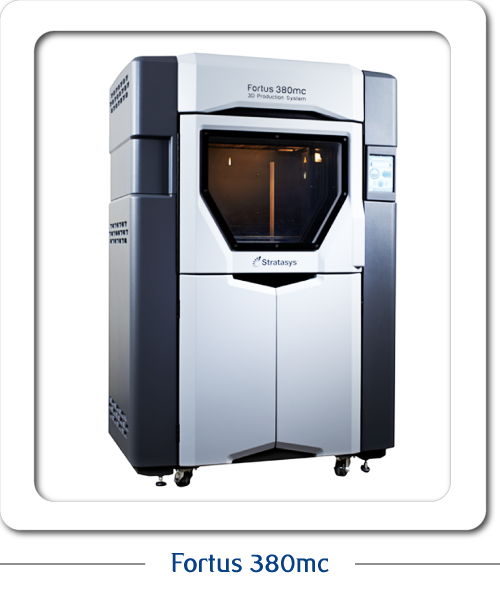 The range also uses motion-control components like linear profiled rails with ball bearings, which are prefered by the company over sleeve bearings.
The range also uses motion-control components like linear profiled rails with ball bearings, which are prefered by the company over sleeve bearings.
In terms of throughput, STL build speeds related to Dimension® & Fortus 250mc™ are given as 0.91 in³ /hr for the F123 Series of Stratasys 3D printers. Stratasys benchmarks for standard build mode are quoted as 49% faster than a Fortus 250mc, a figure that rises to 98% when the F123 series operates in PLA draft mode.
Enclosed build chamber and noise reduction
The F123 series features an enclosed, insulated build chamber with an auto-locking door. The range of 3D printers also have noise insulation that measures at 46 decibels.
Regarding temperature control in the build chamber, Stratasys are very proud of the oven air duct, a component designed to offer a “tightly controlled temperature profile within the build chamber.”
Much like aspects of the print heads, 3D printing was an integral stage of the design process.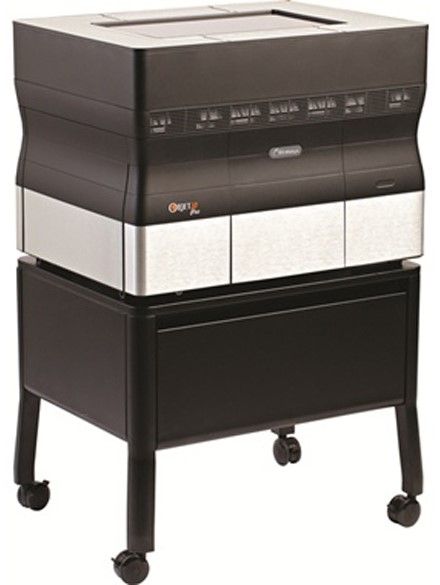 The 3D printer manufacturer points out that conducting thermal and mathematical analysis is part of the journey, but creating tangible models allows these specifications to be refined to a much further point than mathematical modelling alone permits.
The 3D printer manufacturer points out that conducting thermal and mathematical analysis is part of the journey, but creating tangible models allows these specifications to be refined to a much further point than mathematical modelling alone permits.
Stratasys recognizes that a substantial amount of development has occured in the FDM 3D printer market and have issued a warning about lower priced 3D printing option. Buyers of cheaper 3D printers should be wary of the “seduction of low-priced equipment [that] will often limit your long-term prototyping capabilities, growth plans and day-to-day equipment uptime.”
Temperature control within the F123 3D printing “oven” is also designed to prevent the curling of 3D printed components. Heated build chambers can be advantageous in this respect, especially when 3D printing longer or flatter parts.
Regarding the build chamber Stratasys add that it offers “tight temperature uniformity across the build plane, with no dead spots”
Exterior construction
In the press release accompanying the F123 series, much was made of the collaboration between the BMW design team and Stratasys to construct the exterior. The 3D printer has a 1/8” aluminum exterior with slot & tab construction, tempered glass and thermal and noise insulation.
The 3D printer has a 1/8” aluminum exterior with slot & tab construction, tempered glass and thermal and noise insulation.
Other specifications and features of the Stratasys F123 3D printer range
The 3D printers are all Wi-Fi-ready, but files can be printed via USB or Ethernet cable. The 3D printers have a built-in camera that can be used for remote monitoring via an app. Further user interaction is possible via a touchscreen interface that offers support for 10 languages.
Stratasys have made much of the dual operation modes. The F123 3D printers offer a “Fast Draft print mode” which runs at twice the speed of the standard FDM print operation while typically using only one-third the material. In this mode 3D prints using PLA can be conducted, before making the part in one of the other material options.
The 3D printers also feature, self positioning filament spools that are intended to save the operator time.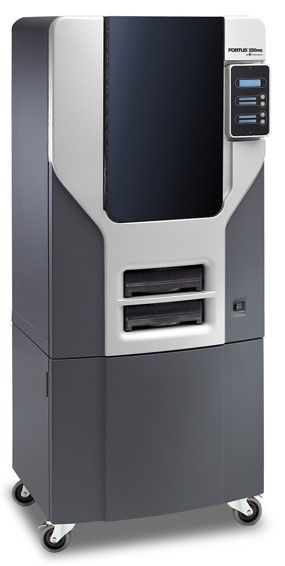
We’ll be bringing you more details about the F123D range of 3D printers as we have it. Sign up to our newsletter and follow us on social media if you’d like to be first with all the latest news about 3D printing.
Stratasys F123 build chamber and material options
Stratasys F170™
10”x10”x10”
254 x 254 x 254 mm
PLA, ASA, and ABS
Stratasys F270™
(44% bigger than F170)
12”x10”x12”
305 x 254 x 305 mm
PLA, ASA, and ABS
Stratasys F370™
(96% bigger than F170)
14”x10”x14”
356 x 254 x 356 mm
PLA, ASA, ABS and PC-ABS
Tags F123 Fortus 250mc Stratasys Stratasys F170 Stratasys F270 Stratasys F370
Michael Petch
Michael Petch is the editor-in-chief at 3DPI and the author of several books on 3D printing. He is a regular keynote speaker at technology conferences where he has delivered presentations such as 3D printing with graphene and ceramics and the use of technology to enhance food security. Michael is most interested in the science behind emerging technology and the accompanying economic and social implications.
Michael is most interested in the science behind emerging technology and the accompanying economic and social implications.
3D printers | Computer World
Technology
Harvard has grown a "heart on a crystal"
Technology
HP promises a revolution in 3D printing
Technology
Humans and robots on the ISS: fifteen years shoulder to shoulder
Technology
HP's entry into 3D printing will radically change production
News
A 3D-printed residential area will appear in Holland
Russia has developed a material for 3D printing that is unique in its versatility
living cells
Technologies
"Organaut": the first living tissue in space was obtained on a Russian bioprinter
14:16 12/17/2018 | Irina Sheyan |
Cosmonaut Oleg Kononenko printed human cartilage tissue and mouse thyroid tissue on a magnetic 3D bioprinter.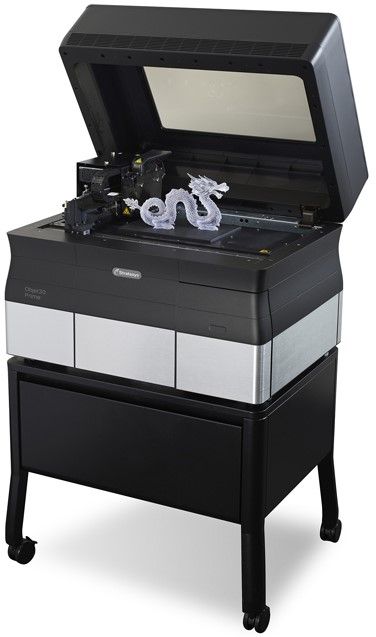
Enterprise
3D printing is changing supply chains
12:08 02.08.2018 | Peter Sawyer |
Additive manufacturing affects the entire product lifecycle, from ordering and manufacturing components to assembly and pricing.
Technology
3D printed devices communicate without batteries
09:53 21.12.2017 | George Knott |
The plastic plug-in devices developed by American researchers use backscattering technologies.
Technologies
Desktop 3D printer forms multilayer printed circuit boards
15:04 20. 06.2017 | Lucas Merian |
06.2017 | Lucas Merian |
Using the Nano Dimension Dragonfly 2020, you can prototype electronic devices in a matter of hours.
Technology
Chocolate printer
14:47 27.04.2017 | Melisa Savina |
Choc Edge has improved the Choc Creator 2.0 Plus 3D printer for printing chocolate products. The new printer takes into account all the disadvantages of version 1.0, improved design and printing technology.
Technology
Ford trials 3D printing
14:16 21.03.2017 | Lucas Merian |
The company believes that the use of 3D printing to create automotive parts of any shape and size could be a real breakthrough in the automotive industry.
Technology
Stratasys Introduces Rapid Prototyping 3D Printers
09:47 27.02.2017 | Lucas Merian |
The new family of office printers can use up to four resins and produce prototypes in 10 different colors.
Industry
Information modeling. Democratization
09:04 10/17/2016 | Alexey Esaulenko |
Autodesk's industrial and construction modeling technologies are now available to customers on a subscription basis for the duration of a project.
Technologies
Robotic megaprinters advance the era of additive manufacturing
09:41 30. 08.2016 | Lucas Merian |
08.2016 | Lucas Merian |
The two prototype Stratasys 3D printers are designed to produce large parts and can use composite materials, including carbon fiber.
Technology
4D printing saves lives
12:41 14.06.2016 | Lucas Merian |
In the near future, printing using lab-grown tissues and biomaterials will find use in the manufacture of implants that adapt to body changes and growth over time.
3d sports car parts
1960s style meets 21st century technology as the iconic car company is reborn in Ant Anstead's new Discovery+ show, Radford Returns.
The sexy new sports car Lotus Type 62-2, lovingly revived by carmaker Ant Anstead and former Formula 1 champion Jenson Button, was made possible only by additive manufacturing. As the new streaming series on Discovery+ shows, no other technology can provide the design freedom, flexibility and cost that FDM and resin 3D printing have brought to a project.
As the new streaming series on Discovery+ shows, no other technology can provide the design freedom, flexibility and cost that FDM and resin 3D printing have brought to a project.
Radford Returns tells the story of the renaissance of the art of coachwork using 21st century technology. The show features Anstead and Button and documents the assembly of the retro-modern Lotus Type 62-2 supercar and their extensive use of 3D printing.
Viewers get an inside look at the process from design to prototyping, tooling and finally production of production parts using Stratasys FDM, PolyJet and stereolithography 3D printing technologies. In fact, over 500 3D parts were printed in the project.
“Stratasys 3D printing technology has given us design freedom and the ability to easily create custom, one-off parts and components for these two prototype vehicles,” said host Ant Anstead. “This has given us the opportunity to fully embrace bespoke bodybuilding, but with updated processes using 21st century technology. ”
”
For the production of the first two vehicles, parts were 3D printed by Radford Studio, the Aria Group automotive design and engineering firm, and Stratasys Direct Manufacturing. Using Stratasys' GrabCAD Shop software, Radford's team planned and tracked their 3D prints at five locations around the world, using up to 20 Stratasys 3D printers simultaneously. Stratasys printer portfolio includes F9 3D printers00, F770, Fortus 450mc, F370 and J55, each used to achieve different desired results for each part.
Using a variety of 3D printers and technologies, the team was able to produce parts such as a large solid multilayer composite firewall printed in two halves on a Stratasys F900 printer using Ultem 1010 resin. styling tool. The firewall design included intricate internal speaker mounts, fuel tank mounts, and luggage compartment mounts.
Exterior elements, from the side mirror housings and radiator air ducts to the body vents, were printed in FDM Nylon 12 carbon fiber and ASA materials.